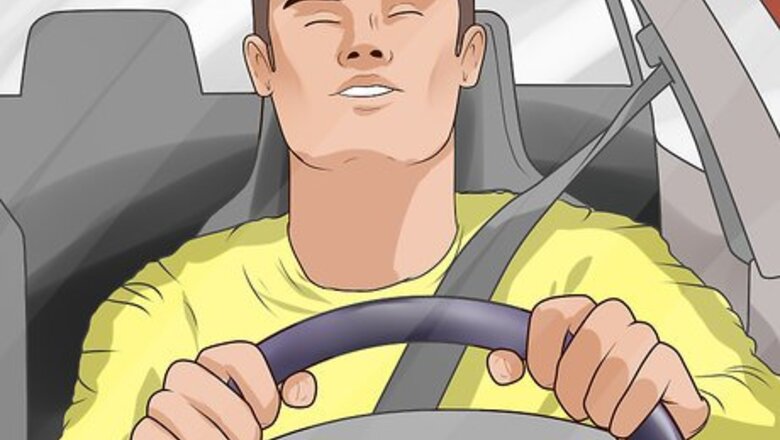
views
Calming Yourself in the Moment
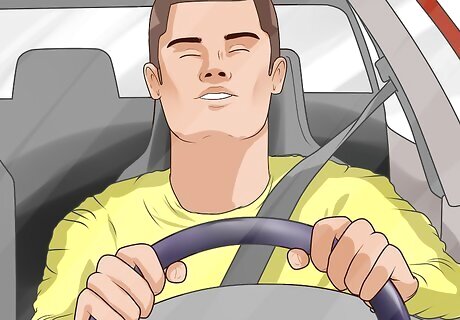
Practice deep breathing techniques.This is one way that you can instantly relax when you are driving. Deep breathing slows your heart rate, lowers your blood pressure, and calms you overall. Take a slow, deep breath in through your mouth. Try to feel it in your lower abdomen. Slowly release the breath through your nose. Take a few deep breaths whenever you feel road rage or anxiety and tension building when you are driving. Take as many breaths as you need to calm yourself and feel relaxed.
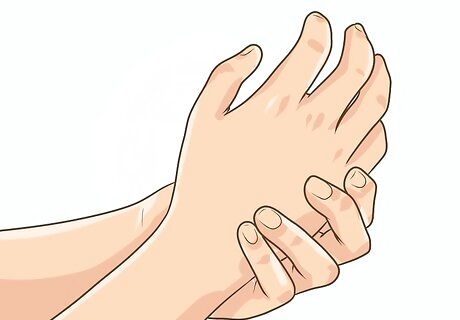
Release tension in your body. You may find that your hands are clinched on the wheel, shoulders hunched, neck tight, and jaw tense. You can relax when driving if you do things that relieve the tension in your body. Shrug your shoulders up and down to relax them. Roll them forward and then backwards a few times. Relax your jaw and forehead. Smiling, even briefly, can help you relax your facial muscles. Turn your head slightly back and forth and left and right to release tension in your neck. Do some hand and finger stretches when you are stopped at a red light.

Use mindfulness strategies. Being mindful means focusing your attention in the here and now, on driving and only driving. Focusing your mind completely on driving doesn’t give your mind much room to think about anything upsetting and can help you relax when you are driving. Take notice of all your senses as you drive. What do you hear, see, or smell? What does the car feel like? Pay attention to how your body feels. You may say to yourself, “My shoulders feel tense and my stomach is queasy.” Take notice of your thoughts and emotions. For example, you might think, “I feel worried and nervous. I keep thinking about getting on the highway.” Allow yourself to experience your feelings without trying to stop them from happening. Notice as the feelings slowly go away and how you feel as they do.
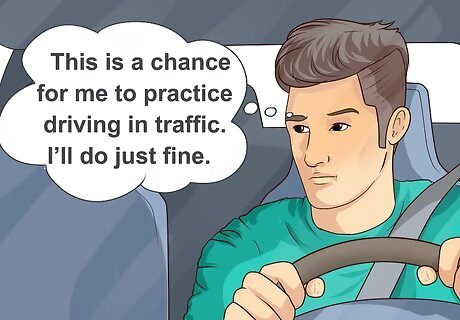
Change your self-talk. It is easy to start saying things to yourself that increase your feelings of tension, stress, anger, and anxiety. You can relax when you are driving if you make an effort to think relaxing thoughts and talk to yourself in a calm way. For example , when someone is driving unsafely, you may want to say to yourself, “They cut me off! This is so frustrating! Driving makes me tense!” Instead, think, “He’s not driving safe. I’m glad I don’t have to stay around him. I’ll move to this lane. He’s not interrupting my relaxing drive.” Or, you may think to yourself, “I’m not good at driving in this traffic. Something bad is going to happen.” Instead, try saying to yourself, “This is a chance for me to practice driving in traffic. I’ll do just fine.”
Preparing for a Relaxing Drive
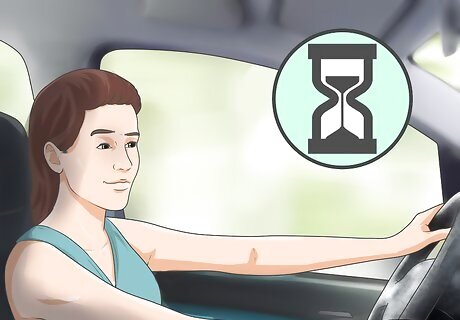
Give yourself plenty of time. Rushing to get somewhere can make you nervous and anxious. Instead, you can relax when driving if you make sure that you leave in enough time to arrive at your destination without rushing. Allow time for accidents, traffic, detours, and other unexpected events that might make you late.
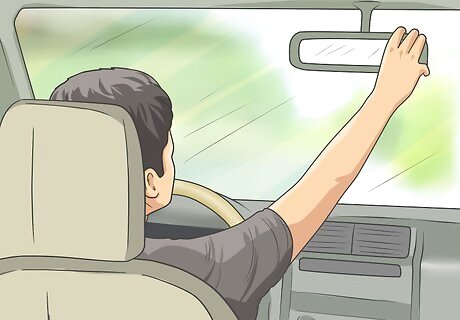
Set up your car. Preparing your car for your drive before you get behind the wheel can help you relax when driving. Before you get in, make sure that you have adjusted your controls and set the car up for your drive. Position your seat in a comfortable position. You should be able to sit in the driver’s seat comfortably and still easily reach the pedals and steering wheel. Adjust your rearview and side mirrors so that you can see everything around you and don’t have to worry about adjusting them while you are driving. If you are using GPS, go ahead and set your location and put the device somewhere that you can easily see it while driving. Adjust any other controls or settings, like temperature, beforehand so that you can focus on driving once you get started.
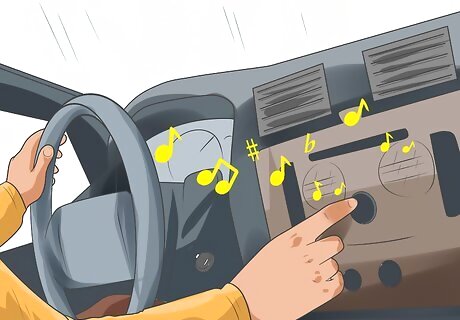
Turn on relaxing music. Some research suggests that listening to classical, pop, or other downbeat music while you are driving can calm you down. So turn off the rock and rap and put on some pop or R&B to relax when you are driving. Listening to more fast tempo music like rock can cause you to drive faster and get upset easier. Try to set your radio station or music before you start driving so that you aren’t distracted while you are driving.
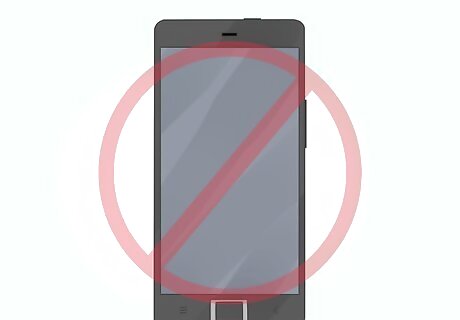
Put your electronic devices away. The distractions of alarms, alerts, and notifications can distract you and cause you to become tense while you are driving. To be safe and to relax when you are driving, put your electronic on silent or at least out of reach. You can lose focus on driving as you try to see who is contacting you or become anxious as the beeps and tones continue to go off. Some phones and phone services have a ‘driving mode’ that can be used while you are driving to reduce your distractions. If you need to, put your phone somewhere that you can’t reach it so you won’t be tempted to check it.
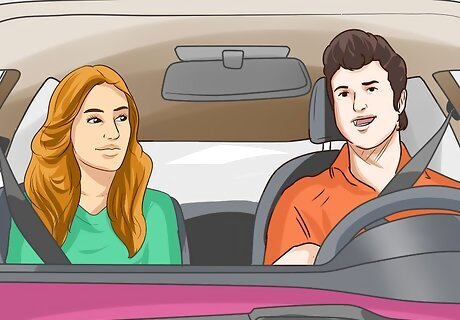
Talk to your passengers. Having a conversation about ways to help you stay calm when you are driving can eliminate some of the stress passengers can add to driving. Let your passengers know that you want to be relaxed while you are driving and tell them what they can do to help. Ask your passengers to wear their seatbelt, try to be still, and talk calmly to you. For example, you could say, “While I’m driving please don’t yell at me or try to get things out of the backseat. It makes me nervous.” Talk to children about how they should behave when they are passengers in a car. You might say, “Kids, you should sit back, stay in your seatbelt, talk quietly, and no horseplay. This will keep you safe and me relaxed.”
Handling Specific Driving Concerns
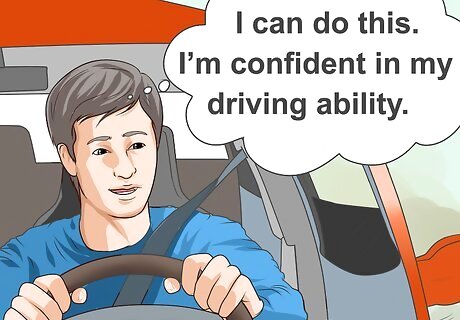
Be confident when driving in new situations. You may find yourself in a situation where you have to drive in conditions you aren’t used to. For example, you may have to take the highway when you are used to driving on residential streets. You can relax when driving in new situations if you remain confident in your driving ability. Remember that you know the basic rules of driving and that they are generally the same, regardless of the situation. You might say to yourself, “This is a new situation, but I’m a safe driver and can handle this.” For example, if you are driving in a construction zone for the first time, you might remind yourself, “I can do this. I’m confident in my driving ability.”
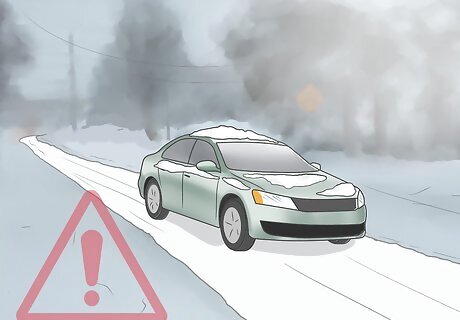
Use caution in inclement weather. At some time or another you will likely have to drive when it is raining, snowing, or very windy. You can relax when you are driving in bad weather, however, if you stay alert and drive with caution. If the weather is very bad, for example, there are high winds and hail, try to avoid driving at all. Make sure your headlights, brake lights, and windshield wipers are working before you leave. Reduce your speed so that you can have time to react to anything that comes up when you are driving. Pay attention and look for road hazards like fallen tree branches or flooding roadways.
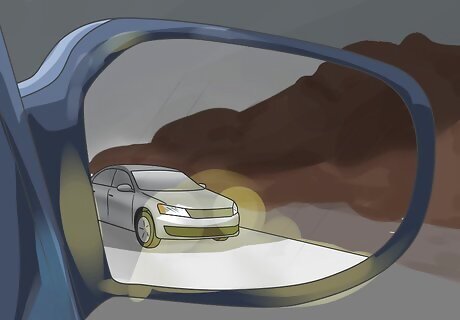
Be alert when driving at night. You can relax when you are driving at night if make sure that you are focused and paying attention to what is going on around you. Look out for motorists and pedestrians that may be hard to see at night. Use your mirrors often and look around ahead of you. Make sure your headlights are on and that your brake lights work before you start driving. Don’t drive when you are tired or sleepy.
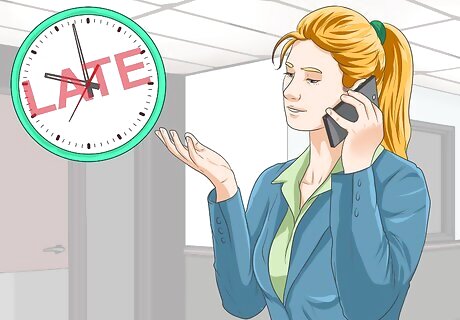
Accept it when you are running late. There will be times when, no matter how hard you try, you end up running late. Instead of getting nervous and trying to rush to get there, notify the appropriate person you will be late and accept it. This will help you relax when driving much more than trying to beat red lights to save a few seconds on your driving time. For instance, if an accident on the interstate is making you late for work, instead of getting frustrated, call your supervisor and let her know. You might say, “I wanted to let you know that I am on the way, I’m just running a few minutes late because of an accident.”
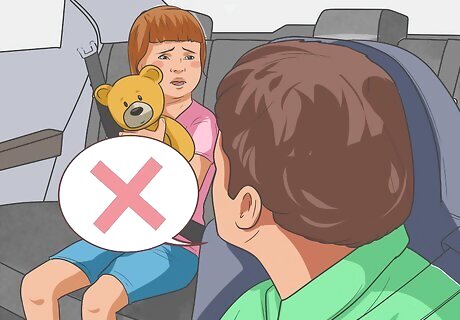
Stop other people in the car from distracting you. When the kids are making a ruckus in the back seat or your mom is being a backseat driver, it can be very distracting and upsetting. You can relax when you are driving if you ask them not to distract you before you begin driving. If you are already driving, calmly, but firmly tell them to stop. For instance, you might say, “Kids, when I start driving you have to sit back and talk quietly. This will keep me calm and all of us safe.” For example, you can say, “Mom, I appreciate your concern, but you telling me how to drive is making me nervous. Please stop.” If you need to, pull over until the distraction stops. This will keep you calm and safe.
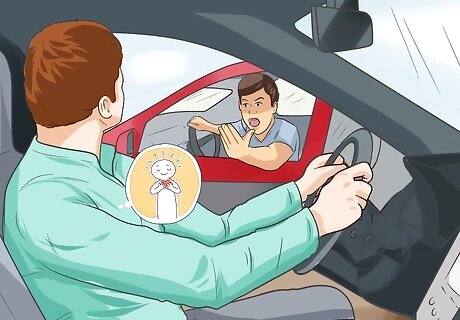
Stay calm around rude drivers. Although other drivers may do things that upset, frustrate, or even scare you like cutting you off, following too close, swerving, or even showing road rage, stay calm. Allowing rude drivers to upset you will prevent you from relaxing while driving. Avoid making rude gestures or even eye contact with other motorists. This could escalate the situation unnecessarily. When possible, change your rate of speed slightly so you can get away from the immediate area of the other driver. If you feel threatened, roll up your windows and lock your doors. Call 911 if you think the situation may get violent.













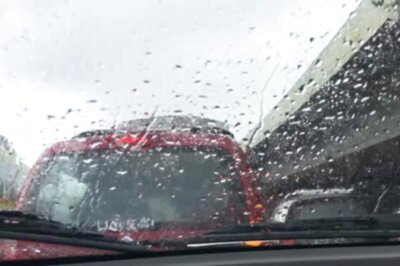


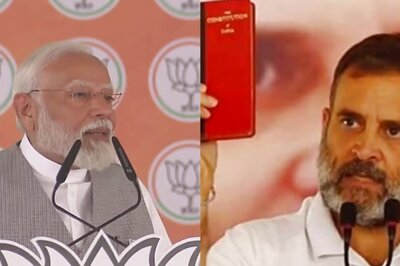


Comments
0 comment